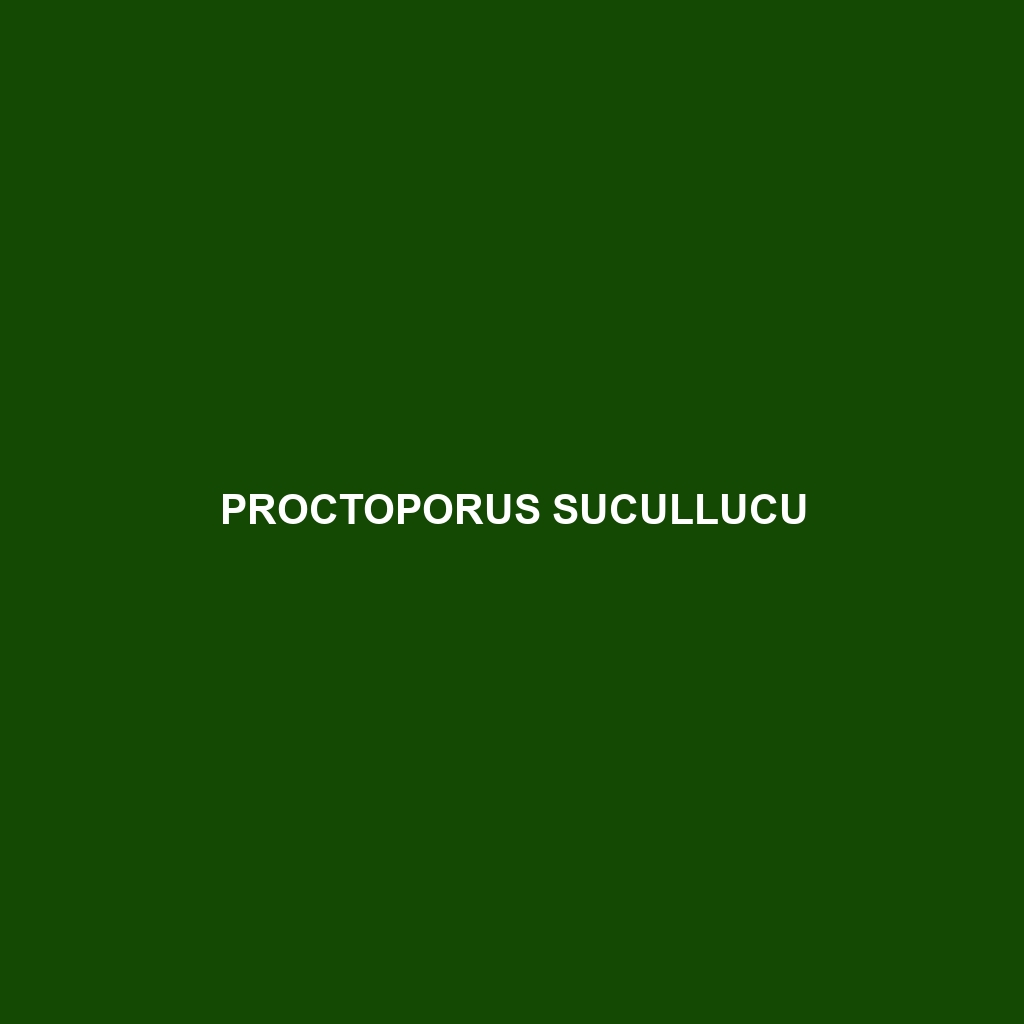Common Name
Proctoporus sucullucu
Scientific Name
Proctoporus sucullucu
Habitat
Proctoporus sucullucu is primarily found in the cloud forests and montane grasslands of the Andes, particularly in regions that are characterized by a humid tropical climate. This remarkable lizard species prefers elevations between 2,500 to 3,500 meters, where the environment is rich with biodiversity. Surrounding vegetation includes dense foliage, moss-laden trees, and a variety of epiphytes, creating a unique microhabitat conducive for its survival. The lizard often resides in rocky areas with ample cover, demonstrating a strong affinity for humid, shaded environments that protect it from direct sunlight.
Physical Characteristics
Proctoporus sucullucu exhibits distinctive physical characteristics that contribute to its identification. Adults typically range from 15 to 25 centimeters in total length, with elongated bodies and a flattened snout that aids in navigating their rocky habitats. The coloration of Proctoporus sucullucu varies among individuals, often displaying a blend of earthy tones, including browns, greens, and grays, which provide excellent camouflage against the forest floor and rocks. Their scales are smooth and glossy, reflecting light to help regulate body temperature. A notable feature is their well-developed limbs, which enhance their agility and speed when traversing uneven terrains.
Behavior
The behavior of Proctoporus sucullucu is intriguing, particularly its nocturnal habits. These lizards are primarily active at night, using the cover of darkness to forage for food and avoid predators. Social interactions among individuals can be observed during the breeding season, where males engage in elaborate courtship displays that include head bobbing and territorial skirmishes. Additionally, this species demonstrates a unique ability to adapt its basking periods based on environmental conditions, allowing it to maximize its exposure to sunlight while minimizing the risk of predation.
Diet
Proctoporus sucullucu is generally classified as an insectivore, primarily feeding on a diverse diet of insects. Their diet includes ants, beetles, and various arachnids, which they hunt using their keen sense of sight. This lizard employs a sit-and-wait hunting strategy, remaining motionless until prey comes within striking distance. Occasionally, they may consume plant matter, including leaves and fruits, but they are not known for being herbivorous. The efficiency of their hunting methods contributes to their survival in a habitat rich with potential threats.
Reproduction
The reproductive cycle of Proctoporus sucullucu typically occurs during the warmer months, with mating rituals observed primarily in the late spring to early summer. Females are ovoviviparous, meaning they give birth to live young rather than laying eggs. The gestation period lasts approximately 60 to 80 days, after which females give birth to 2-5 juvenile lizards. The young are fully independent at birth, equipped to fend for themselves immediately. Parental care is minimal, as Proctoporus sucullucu relies on the natural camouflage of the offspring to protect them from potential predators.
Conservation Status
The conservation status of Proctoporus sucullucu is currently listed as vulnerable due to habitat loss and fragmentation resulting from deforestation and agricultural expansion. The unique cloud forests in which they reside are particularly susceptible to environmental change. Various conservation efforts are underway to protect their habitats, including the establishment of protected areas and community-based conservation initiatives aimed at sustainable land-use practices. Challenges remain, as illegal logging and climate change pose ongoing threats to these fragile ecosystems.
Interesting Facts
One particularly interesting aspect of Proctoporus sucullucu is its remarkable ability to change color, a trait that assists in thermoregulation and camouflage. Additionally, some studies suggest that these lizards possess a unique form of communication through body language, utilizing their tails and body posture to signal intentions to other lizards. This complex behavior adds to their allure among herpetological enthusiasts.
Role in Ecosystem
Proctoporus sucullucu plays a crucial role in its ecosystem by serving as both predator and prey. As an insectivore, it helps control insect populations, contributing to a balanced food web. Furthermore, it serves as a food source for larger predators, thereby supporting biodiversity within its habitat. Its presence indicates a healthy ecosystem, as they are sensitive to environmental changes. Conservation of this species ultimately aids in the protection of numerous other species that share its habitat, thus maintaining ecological balance.
